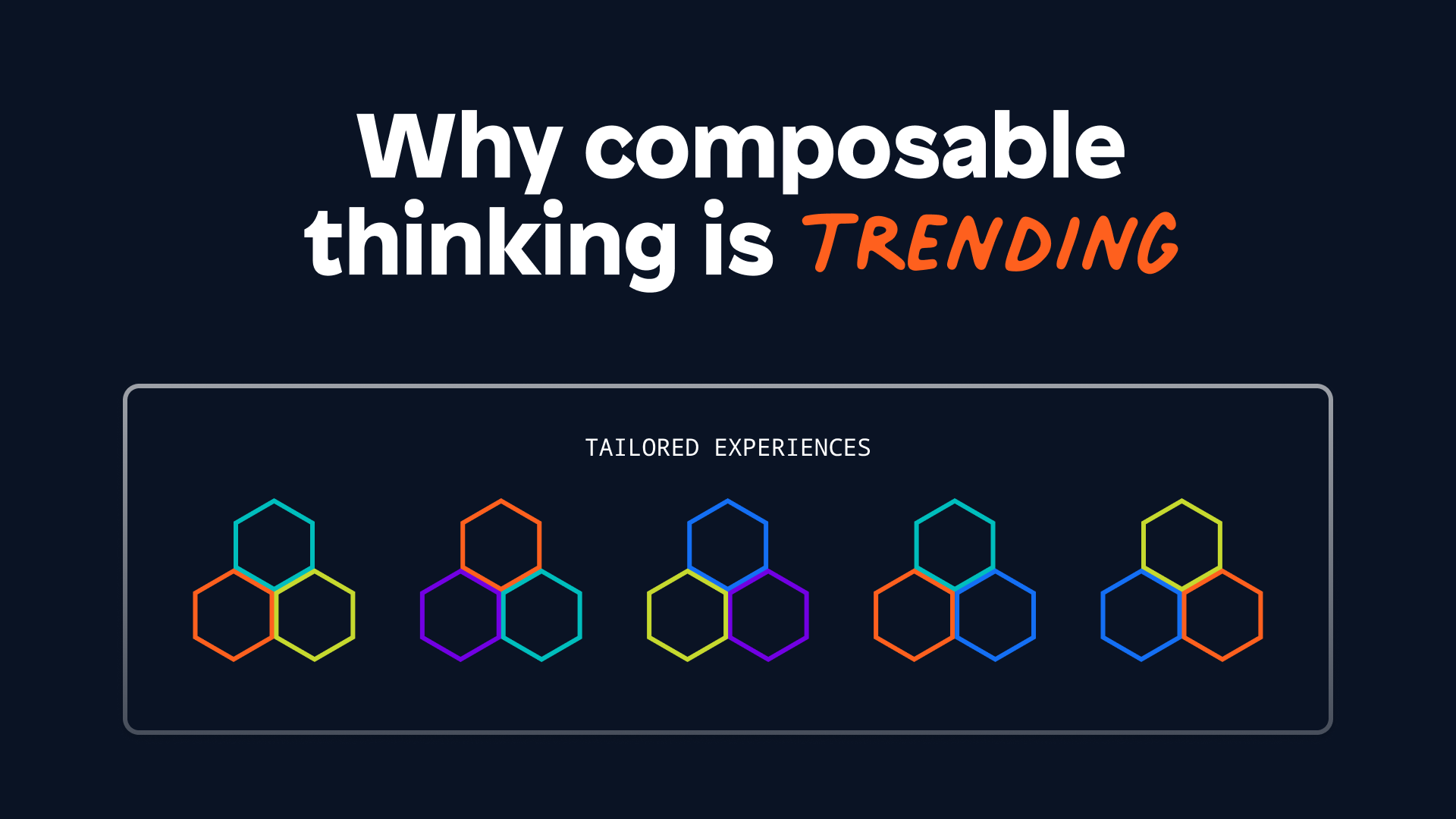5 Digital Transformation Trends for Growth in 2023

An economic recession, a global supply chain disaster, a pandemic, a housing bubble burst, an oil shortage, or a dot-com burst. No matter what it is, your organization will invariably face threats of disruption. History has shown that an organization’s perseverance stems from how well it responds to change.
Organizations are organisms, able to evolve. Those in charge would do well to bear that in mind, especially when it comes to 2023 digital transformation trends and goals: You need to become a change-ready organization. This starts with the way in which you structure and equip your organization to deliver technology that allows you to adapt to challenges and opportunities in your market.
Here are the five things you need to focus on for your digital transformation in 2023 and help your business continue to respond to change and evolve.
1. Composability
Composable thinking is a philosophy that looks at business architecture to see how you can support adaptability and agility with technologies. Becoming more adaptable means rethinking aspects of your business that have been challenging to change. That resistance to change could be a result of legacy software or processes that are too brittle or rigid to restructure. Enterprises are increasingly leveraging adaptive solutions and software building blocks–known as packaged business capabilities (PBCs)–to re-architect systems that are more adaptable and versatile.
With packaged business capabilities, enterprises effectively have a library of building blocks from which they can compose, customize, extend solutions—or create new digital experiences—rather than being locked into using software monoliths. With this adaptability, you hasten your response to market changes disruptions and opportunities. In fact, Gartner reports that organizations that adopt a composable approach stand to outpace competition by 80% in the speed of new feature implementation.
60% of mainstream organizations will list composable enterprise as a strategic objective
In 2023, composability stands to become a constant factor in digital transformation success. In the “Innovation Insight for Composable Modularity of Packaged Business Capabilities” report, Gartner predicts that in 2023, 60% of mainstream organizations will list composable enterprise as a strategic objective and will use an increasing number of packaged business capabilities.”
If you haven’t already, start scrawling composability into your business lexicon.

2. Fusion teams
Transformation-halting rigidity doesn’t just exist within monolithic systems or manual processes. The way organizations are structured to create and take in software requests can also hinder the journey to digital transformation in 2023. The way that the business requests software, IT adds it to their backlog, and then plays prioritization musical chairs with other requests is untenable for a business that needs to adapt quickly and often.
The Fusion teams movement is already on the rise.
Fusion teams are a massive digital transformation 2023 trend you need to pay attention to. Fusion teams buck the typical IT-and-everyone-else trend typically seen in legacy organizations. Fusion teams are a mixed group of business technologists with close domain expertise and professional developers that work in the software development cycle together.
The Fusion teams movement is already on the rise. Gartner says in the “Fusion Teams: Democratized and Distributed Technology Delivery for Digital” report that “CIO’s strategic reach grows as IT equips and empowers others to use and build digital capabilities.” It also cites that, in 2021, IT staff already reported more collaborations with business technologists.
3. Internal marketplaces
To assemble solutions from different PBCs, organizations need to build a library to host them. In 2023, you’re going to see a lot of companies leverage internal marketplaces where members of Fusion teams can grab ready-made components to construct solutions.
A good internal marketplace will host components that are already pre-tested for quality and security so that Fusion teams can focus on composing and extending for their solutions. By sheer fact that developers won’t have to re-test certain aspects of a solution, this means that Fusion teams can quickly spin up solutions to help respond to market changes.
4. Organic governance
If the way you’re organizing to build software is going to change, then expect the way you govern those methods and solutions to change as well. Governance models of the past are much like the systems that they govern: stiff, brittle, unyielding. Fusion teams and solutions built by assembling PBCs need a governance model that creates “paved roads” suitable to each situation so that Fusion teams can move quickly while avoiding risk.
An infographic by Gartner sums up the scenario well: There are far more digitally-adept employees—so-called business technologists—customizing or building solutions outside of IT than inside. You need to embrace that, especially when business technologists can make up anywhere between 28-55% of the workforce.
You need to re-think your governance model that still has all the checkpoints associated with DevOps, but is adaptable to each team’s needs. A Fusion team in the Marketing department will have very different needs than Finance, but there will be rules around deployment that both will have to follow.
Achieving change-readiness means recognizing that there’s no longer only one way to do everything—I’d argue that there never was. But don’t fear, this isn’t letting just anyone build anything in any way they want. Back in Mendix World 2020, Forrester spoke at Mendix World about the various models by which an organization could structure and govern development teams to support business goals. In these various setups, IT was very involved in putting together the platforms and the ground rules around development and deployment.
5. Collaboration is community
Collaboration is not a novel idea. So why am I including it in a list of digital transformation trends list? Because organizations need to create and foster new ways of collaboration to ensure composability, Fusion teams, internal marketplaces, and governance succeed.
With productivity and collaboration tools that increase communication, I’m seeing communities of practice take a more prominent role in software development and technology usage. Individuals with a shared interest in a given discipline or tool are gathering together and leveraging community-enabling portals to help share projects, tips, and troubleshooting.
I’m seeing this right now in Siemens, where individuals leverage an “Innoverse” (which itself is a Mendix application, interestingly enough), a place where, what Siemens calls “citizens” exchange use cases that leverage specific tools for advanced analytics, automation (e.g., UiPath, Blue Prism, KNIME, Alteryx), low-code, and visualization. The fascinating thing here is that a given tool vendor had nothing to do with that–or the organic proliferation of the tool’s use that stems from it. It was all naturally occurring. And the only thing that Siemens had to do was provide that community of practice the means with which to organize themselves and exchange information. The results are in many cases hundreds of business-led projects that have been implemented using a particular tool.
Digital transformation in 2023 and beyond
What the past two years has taught us is that to thrive and survive, organizations need to become adaptable and more ready for change. To do so, how you go about building and delivering technology is where you need to pay attention.
In 2023, you need to treat your enterprise like the living, breathing organism it is and support its natural growth by including the entire organization in its digital transformation.